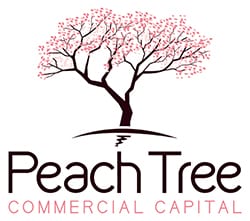Last fall California legislators passed CA SB 1235, a first of its kind law which aims to add transparency to the lending process for small business borrowers. If you operate a business in California the law will certainly affect your future loan applications. However, even if you are located outside of the Golden State, it may still have an impact on business.
How will this affect companies outside of California?
As one of the largest states in the country, California’s business laws often have a direct impact on other states. So even if you are not located in California, the law is still likely to affect your future business loans. Lenders who work in California will implement the new rules so they can continue finance in the state. To make their procedures consistent, many of them will also implement these same policies and procedures for applications outside of California.
In addition, this law may encourage other states or the federal government to implement similar policies. Many lawmakers will watch the impact that California’s legislation has on the private sector before they consider implementing their own laws. Some legislators in the federal government are already considering implementing their own regulations on commercial lending. Senators Sherrod Brown (D-OH) and Marco Rubio (R-FL) announced the Small Business Lending Fairness Act, which would protect small businesses from predatory lending practices. Specifically, it would expand the Federal Trade Commission’s 1985 ban on confessions of judgment in consumer loan contracts to now include small business borrowers. While the proposed legislation is different from SB 1235, it shows the federal government has an interest in improving its regulation of the commercial lending industry for small business borrowers.
What will CA SB 1235 do in California?
SB 1235 requires that lenders clearly communicate to small business borrowers what their financing would cost, including how the interest on their loan will affect their repayment plan. The California Department of Business Oversight will be given the ability to set disclosure standards that provide small business owners with transparency, based on the protections from the national Truth in Lending Act from 1968. This Act codified protections for personal loans into law, protecting consumers from bad mortgages and bad credit card agreements.
In the case of CA SB 1235, lenders will be required to disclose the total amount of funds provided, the total dollar cost of the financing, the term or estimated term, the method, frequency, and amount of payments, a description of repayment policies, and the total cost of the financing expressed as an annual percentage rate (APR). This requirement to express total financing costs as an APR will generate a better sense of the lifetime cost of financing than the annual interest rate (AIR) now provides. In addition, mandating APR disclosure will give borrowers an apples-to-apples comparison tool for evaluating their financing options.
Which loans will this effect?
A variety of commercial lending products will be impacted, including small business loans, merchant cash advances, and factoring transactions. Previously, some lenders had the option to leave off the APR if they were uncomfortable making assumptions regarding how the lifetime rate of the loan may change. This legislation is expected to have a particularly significant impact for online business lending, which has become one of the largest sources of financing since the great recession despite the high (and notoriously hard to identify) APRs of many of their loans.
How will it affect my business?
Even if your business is not located in California, you can expect your future commercial financing options to be affected. This is good news for your business and any loans you’ll need in the future.
The US Department of Labor estimates 100,000 California small businesses close each year, and one of the top 3 reasons is due to poor credit arrangements. CA SB 1235 will provide clarity by requiring the disclosure of APR, which is the simplest, most effective way for borrowers to compare the true cost of financing when evaluating loans that have different rates and terms. For example, a total lifetime APR from a digital lender can range from 20% to 350% of a loan’s value, while a loan from a bank or more traditional lender will typically fall between 6% and 20%. Knowing your exact rates will allow you to accurately understand just how extreme the different pricing structures are and how each loan option will affect your business.
It is important to understand that historically many lenders have not hidden their terms. We pride ourselves in the fact that our brokers and lenders make sure you know all the terms of your loans and offer affordable rates. If you have any questions, our team is always here to help answer them.

